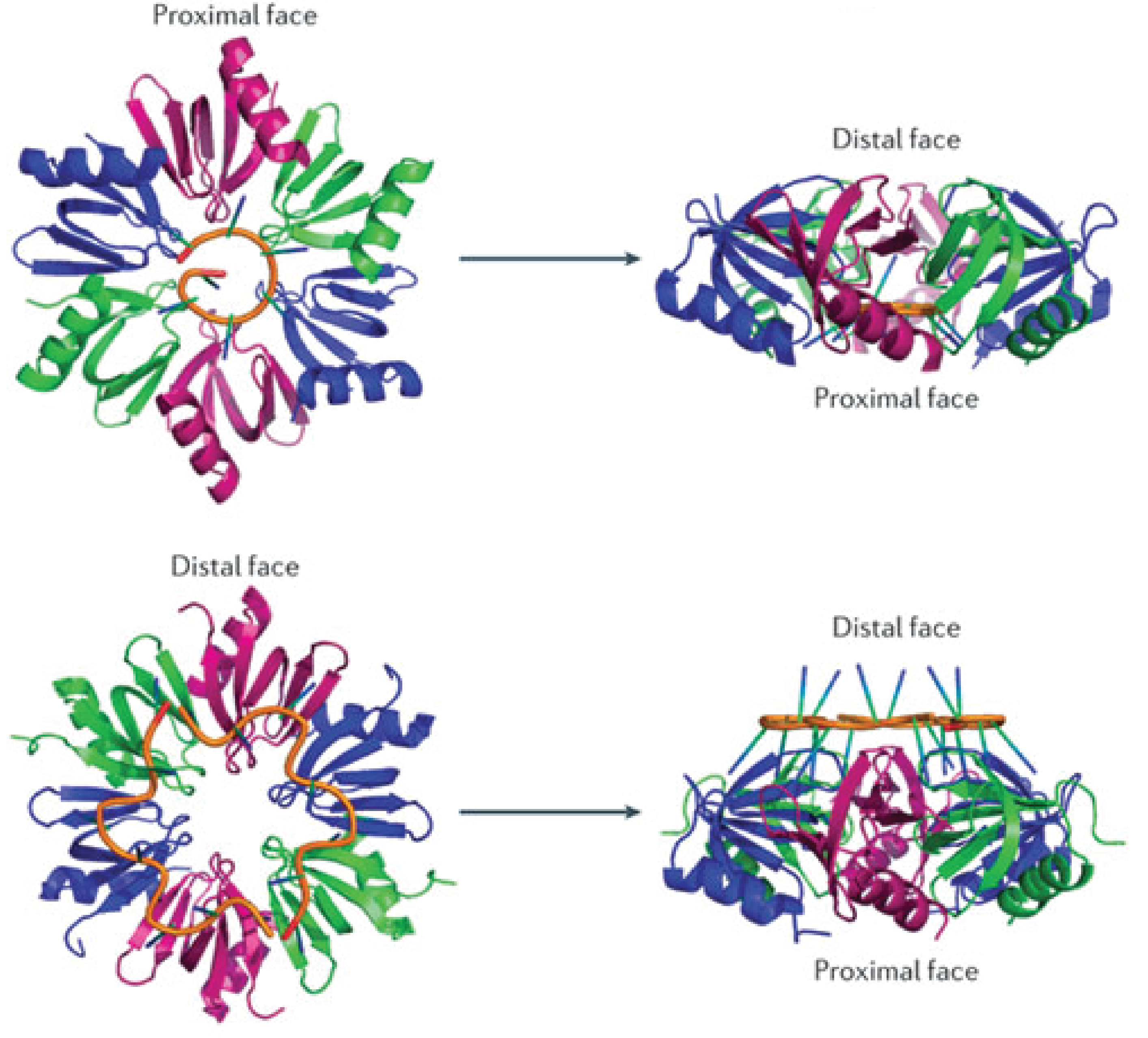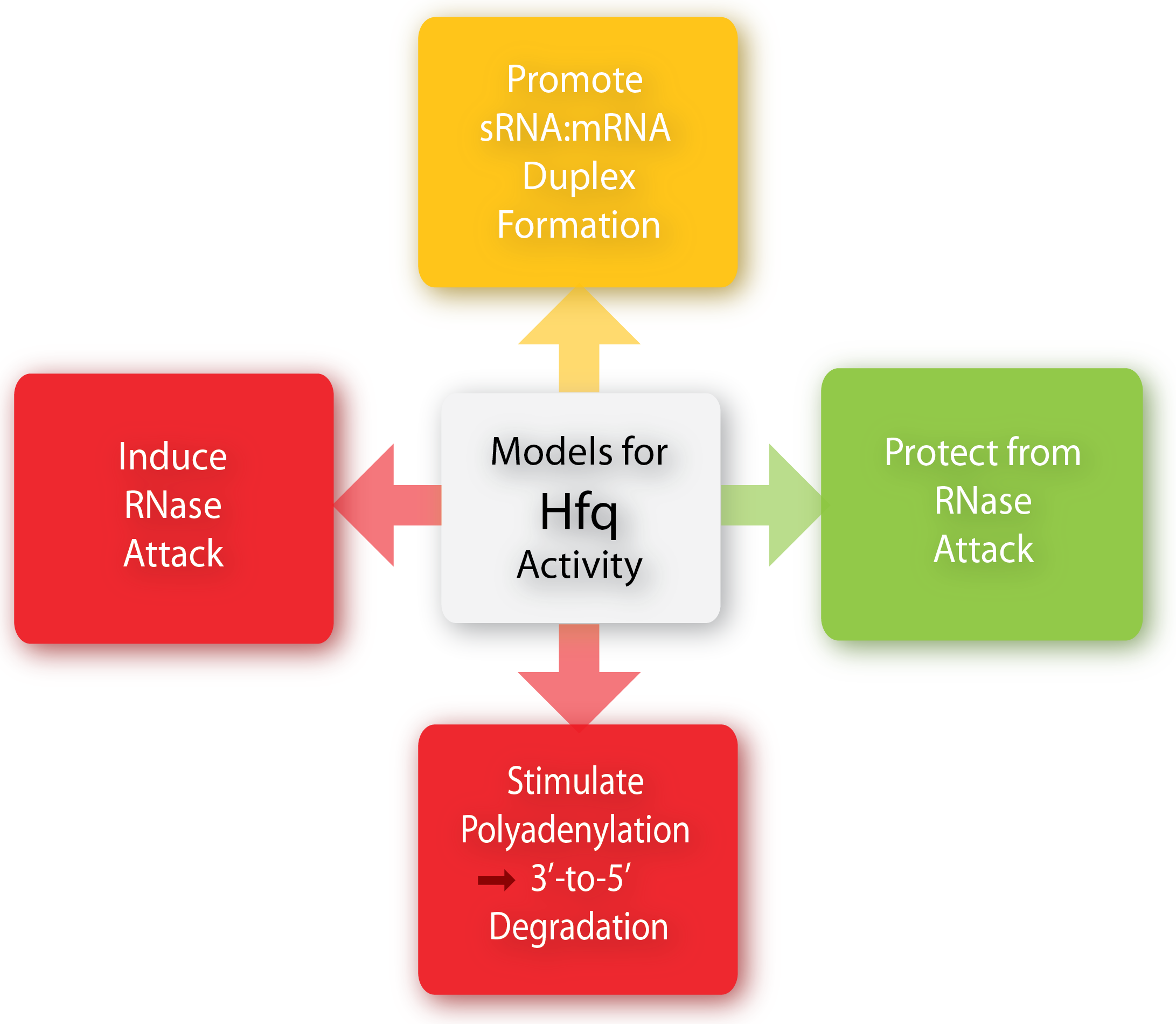Team:DTU-Denmark/What is Hfq
From 2011.igem.org
(Created page with "{{:Team:DTU-Denmark/Templates/Standard_page_begin|What is: The role of Hfq}} ==The role of Hfq== [[File:Hfq_3D_structure.png|330px|thumb|left|The structure of Hfq highlighting t...")
Newer edit →
Revision as of 10:45, 21 September 2011
What is: The role of Hfq
The role of Hfq

Hfq is an RNA-binding protein encoded in approximately half of the (in 2002) sequenced bacterial genomes and is one of the most abundant proteins in E.coli[2]. Hfq consists of six identical subunits arranged in a ringshape structure[2] with two RNA-binding faces and a long unstructured C-terminal. The sequence motif for RNA binding to the distal face is 5'-AAYAAYAA-3' (where Y is a pyrimidine, U or C), whereas the proximal face seems to favor U-rich sequences[3].
The Hfq chaperone is found to be required for many – but not all – trans-acting antisense sRNAs to form limited base-pairing interactions with their target mRNA[2]. Although Hfq has been the subject of extensive research activity, its specific role, mechanism, and function is still not fully understood and it seems to depend on the specific sRNA-mRNA pair. Several models for the general mechanism of how Hfq mediates regulation and how exactly it facilitates pairing have been proposed and are summarized in a recent paper by Vogel and Luisi, 2011.
Hfq may protect the sRNA from ribonuclease cleavage (often performed by RNase E) in some cases whereas Hfq in other cases induces the cleavage of the sRNA and its target mRNA by RNase E. Furthermore, Hfq may promote the polyadenylation of an mRNA by poly(A) polymerase and hereby triggering the 3’-to-5’ degradation by exoribonucleases[3]. Finally, Hfq can promote duplex formation of the sRNA and mRNA, resulting in either translational repression or initiation, depending on whether the sRNA is an activator or repressor. One way by which Hfq can promote sRNA-mRNA duplex formation is by increasing the on-rate for sRNA annealing to target mRNA by promoting base-pairing, either by inducing changes in the secondary structure of RNA to favor duplex formation or by simultaneously binding both the sRNA and mRNA hereby increasing the local concentration of the two RNAs[3][1].
References
[1] Aiba, Hiroji. “Mechanism of RNA silencing by Hfq-binding small RNAs.” Current Opinion in Microbiology 10, no. 2 (2007): 134-139.
[2] Jousselin, Ambre, Laurent Metzinger, and Brice Felden. “On the facultative requirement of the bacterial RNA chaperone, Hfq.” Trends in Microbiology 17, no. 9 (2009): 399-405.
[3] Vogel, Jörg, and Ben F Luisi. “Hfq and its constellation of RNA.” Nature reviews. Microbiology 9, no. 8 (2011): 578-589.
 "
"









